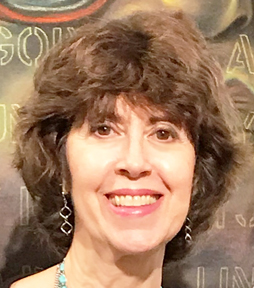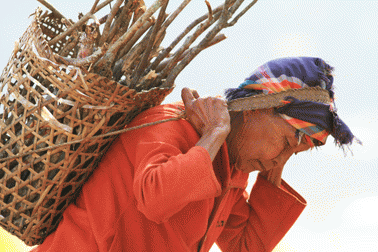Due to the repressive policies of the military dictatorship, whose many members have resurfaced in the pseudo-civilian government (The military gets to "appoint" 25 percent of the seats in Parliament.), outright criticism of the Myitsone was not an option.
Zaw came up with the concept of using exhibitions to challenge the future of the dam. Displaying his photography in a gallery, along with the visual works of other artists, would circumvent governmental rulings against gatherings. The word "dam" had been banned, so the euphemism "reservoir" took its place. The plan to use cultural venues to be instructive, while getting around censorship issues, blossomed.
The subject of the first exhibition was "water." Zaw worked with two colleagues to move the agenda forward. They were Dr. Kyaw Thu Aung, a social activist whom he had met in 2003, and Ko Tar, a writer and publisher who visited the dam site with Zaw in 2009.
World Water Day became the impetus for a small exhibit. Art of the Watershed, mounted in Rangoon, was able to illustrate the negative impacts of the dam. Another show, Vanishing Treasures of Myanmar, looked at deforestation and the loss Bengal Tigers and other wildlife -- many which had been trafficked surreptitiously to China.
Thu was drawn to Zaw's interpersonal skills and out-of-the-box thinking. "He was a catalyst," said Thu. In an interview with Will Parrinello of the Mill Valley Film Group (producers of The New Environmentalists), Thu said, "We used art to bypass the educational void in the population." The result was a visceral response from a full range of different elements within Burmese society -- including ethnic minorities, community leaders, monks, nuns, farmers, and workers. Eventually, government officials and members of Parliament came to see the work on display.
As Zaw's agenda for disseminating information progressed, speeches delivered in tandem with the exhibits became part of the presentations. They were recorded and found their way onto DVDs, which were then copied and passed from hand to hand. Leaflets and books were also distributed.
The integrity of the river and the pushback against the dam became a national movement.
President U Thein Sein realized that the voice of the people could not be ignored. In September 2011, he rejected moving forward on completion of the dam during his term in office. "It was a moment when civil society understood it could influence and affect the country's policy," said Zaw.
I reached out by e-mail to Min Zin, writer on Burma/Myanmar (who also explained the issues around the country's renaming), for his insights into how the election results would impact the future of the Myitsone Dam. Zin serves as a Myanmar expert for NGOs and think tanks.
He responded, "The issue will come up again in the aftermath of the election when the new government takes over the office in March 2016. It will be a big test, especially if it is an opposition NLD-led administration. We are likely to see a more assertive civil society, in their struggle against injustice and rights violation."
At the time of his interview with Parrinello, Zaw reflected about what might happen post-election. "Whoever wins may try to restart the Myitsone project. But they will face very strong opposition from the people, because the people now have the facts and an understanding of the issues. The next president will not be able to turn away from the people's desires, or move forward on this issue lightly."
Art For Change from Mill Valley Film Group on Vimeo.
The New Environmentalists: From Myanmar to Scotland will be shown on PBS and Link TV. Check your local listings.
(Note: You can view every article as one long page if you sign up as an Advocate Member, or higher).






